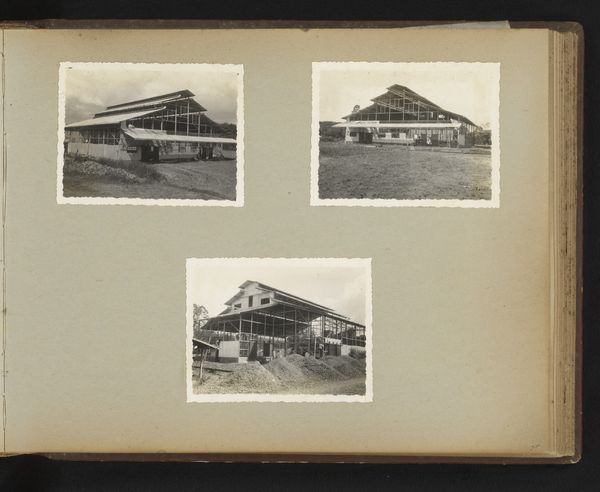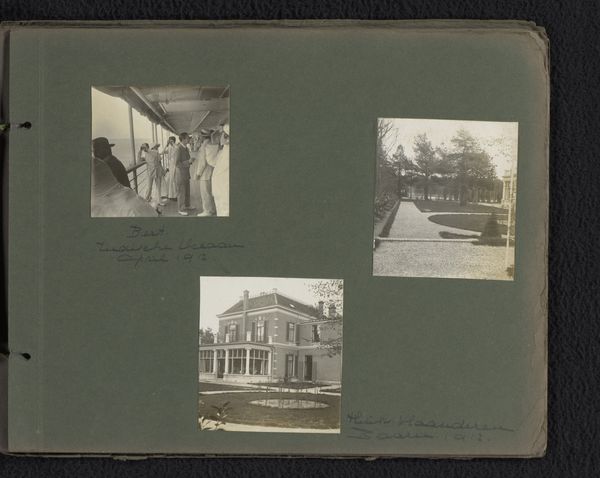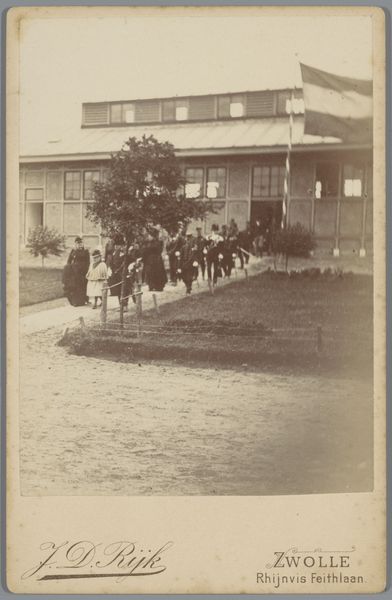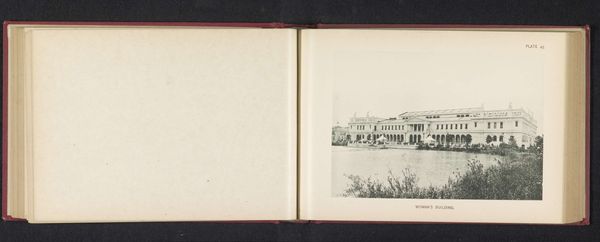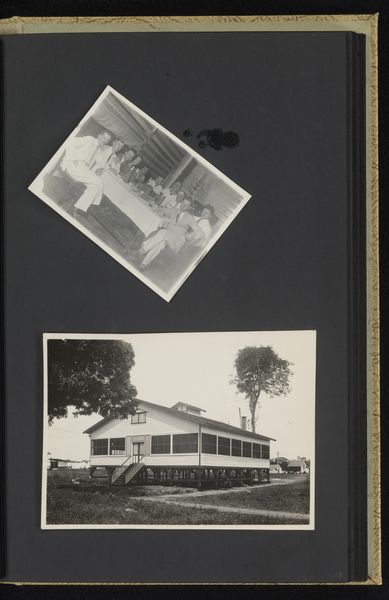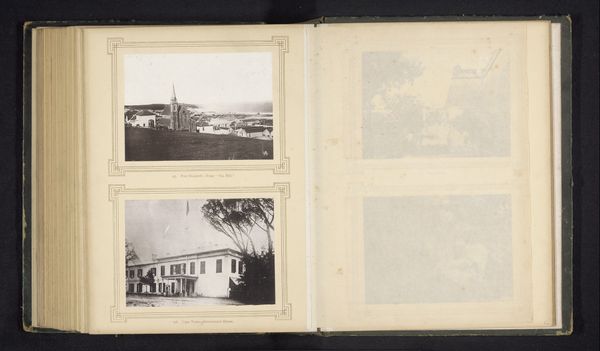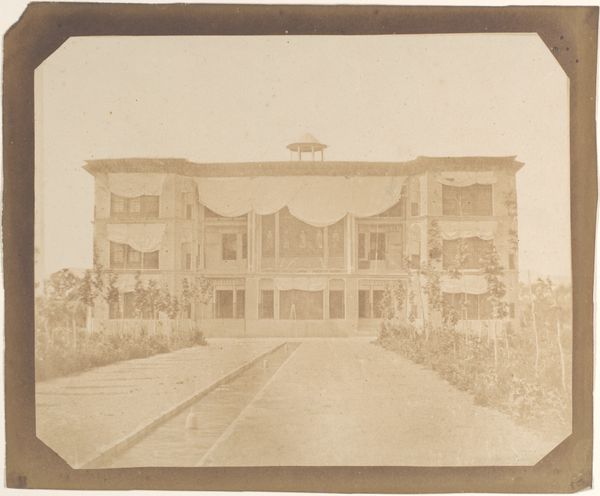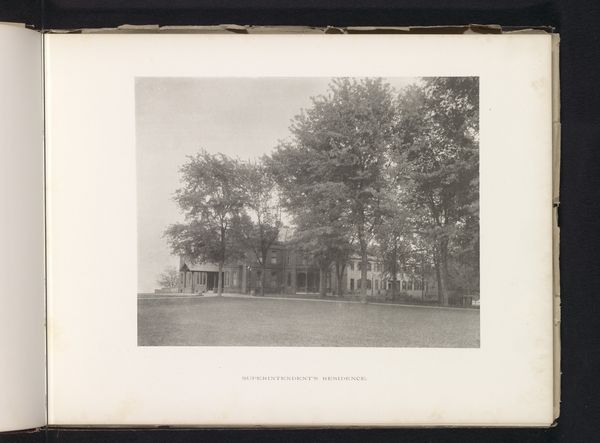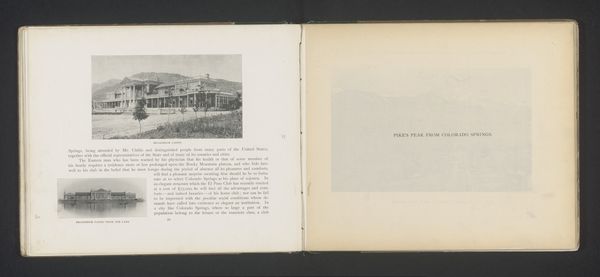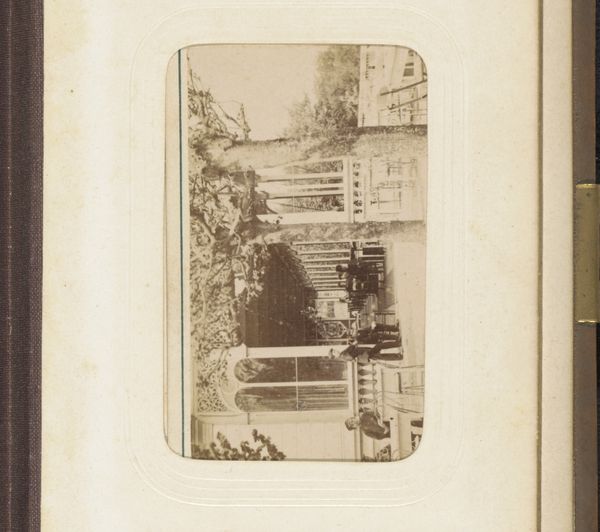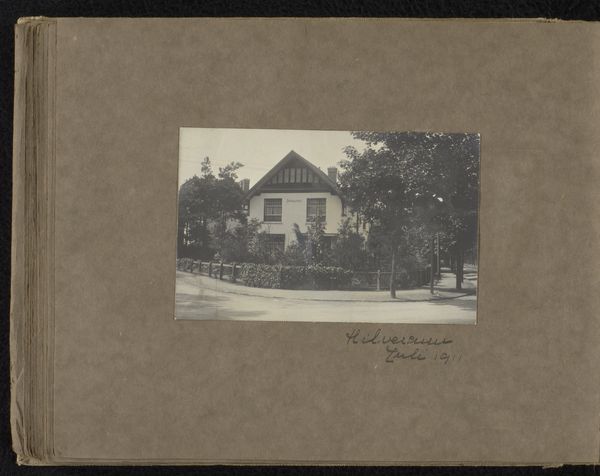
photography, gelatin-silver-print
#
portrait
#
landscape
#
photography
#
gelatin-silver-print
Dimensions: height 88 mm, width 139 mm
Copyright: Rijks Museum: Open Domain
Curator: The photograph before us, “Regeringsgebouw in Georgetown,” was captured around 1910 by The Argosy Company. It is a gelatin-silver print depicting the Government Building in Georgetown. It is very serene. The large building feels like a projection, given the almost aggressively manicured lawn out front. Editor: Indeed. My first impression is its sense of composed formality. The crisp blacks and whites speak to a colonial project, and to the desire to capture it. Consider the conditions that allow this image to be created and distributed: the material infrastructure and resources required. Gelatin-silver prints were products of industrial chemistry, accessible largely through global trade networks dependent on exploitation. Curator: Absolutely. Think about the labor involved, too. The production of the gelatin itself, the mining of silver, the manufacturing processes. These things don't appear magically, they're dependent on layers of resource extraction and labor across the globe. The final product is a carefully created representation of imperial power. This particular building presents a vision of stability and permanence. It uses neoclassicism to reinforce that point, mimicking European traditions of government, despite being planted squarely in Georgetown. Editor: Georgetown, then as now, exists within circuits of global commerce. The photograph presents the building—the site of government—as a permanent feature of the Guyanese landscape, but that is only partially true. It obscures a history of labor unrest, of forced and coercive recruitment that accompanied the emergence of the Guyanese labor movement, starting as early as the late 19th century. We see no traces of that history here, which only enhances the intended impact of the building. Curator: Precisely. The photograph isn’t merely a record of a building. It participates in actively constructing a specific narrative of governance and power. Consider the other architectural projects that preceded and followed this. Each one represents a decision of resources, material, and labor, deployed with the goal of either continuing existing relationships of production, or attempting to change them. It is all material in the end, just transformed through careful labor and use. Editor: That understanding brings the image's true purpose into focus. Thank you, I did not previously understand it that way. Curator: A helpful reminder for myself, too.
Comments
No comments
Be the first to comment and join the conversation on the ultimate creative platform.
